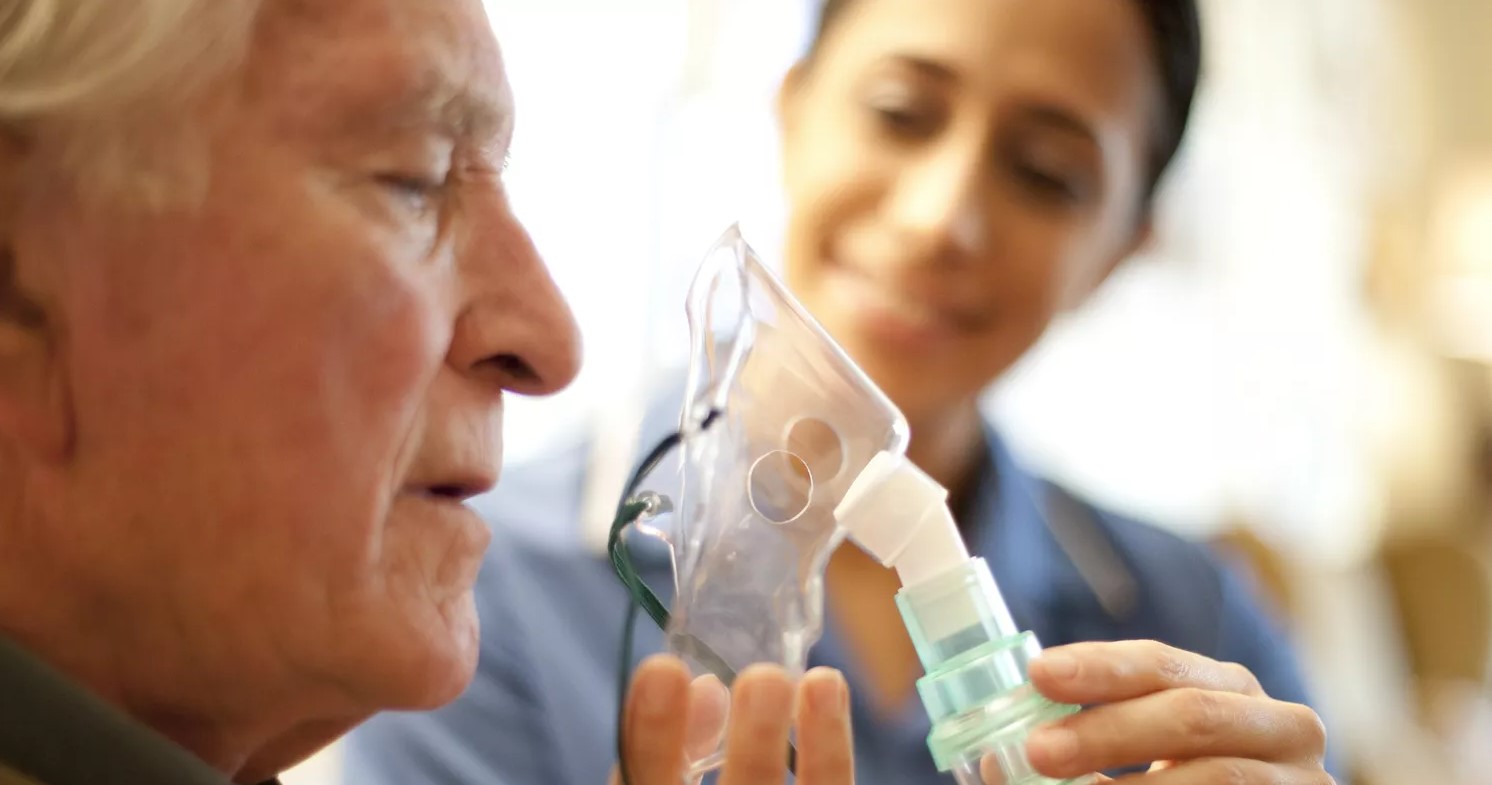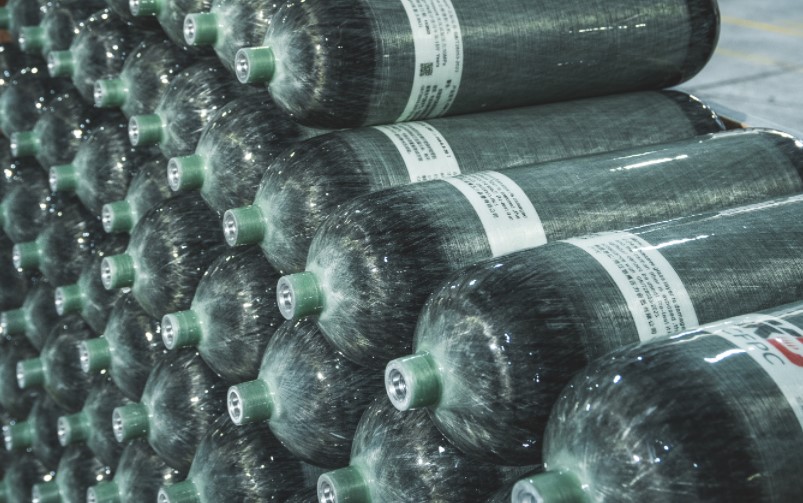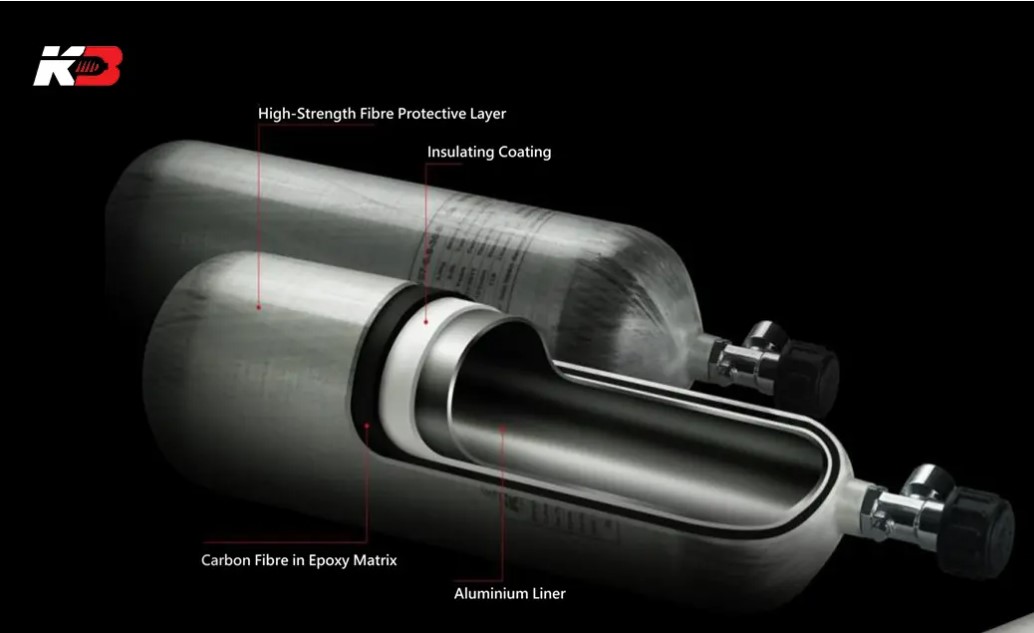Introduction
Medical oxygen is an essential component of modern healthcare, supporting patients with respiratory conditions, surgical procedures, and emergency treatments. Oxygen cylinders serve as a critical tool in delivering this life-sustaining gas, particularly in hospitals, ambulances, home care, and disaster response situations. Traditionally, steel cylinders have been used for storing and transporting oxygen, but recent advancements in material technology have led to the adoption of carbon fiber composite cylinders. These cylinders provide significant advantages in terms of weight, durability, and safety, making them an ideal choice for healthcare applications.
The Role of Medical Oxygen Cylinders in Healthcare
Medical oxygen cylinders store and deliver highly concentrated oxygen to patients who require respiratory support. Their applications include:
- Emergency Care – Oxygen cylinders are essential in ambulances, emergency rooms, and intensive care units (ICUs), ensuring immediate oxygen supply for critically ill patients.
- Surgical Procedures – During surgeries, oxygen is supplied through anesthetic machines to maintain stable breathing for patients under anesthesia.
- Chronic Disease Management – Patients with chronic obstructive pulmonary disease (COPD), asthma, and other respiratory disorders rely on oxygen therapy at home or in hospitals.
- Portable Oxygen Therapy – Many patients require portable oxygen solutions for mobility, allowing them to continue daily activities while receiving oxygen support.
- Disaster and Crisis Response – In scenarios such as pandemics, natural disasters, or war zones, oxygen cylinders become essential for treating respiratory distress and casualties.
What Are Carbon Fiber Composite Cylinders?
Carbon fiber composite cylinders are advanced storage solutions made by wrapping carbon fiber layers around an inner liner, typically aluminum or plastic. These cylinders are designed to withstand high pressure while being significantly lighter than their steel counterparts.
Advantages of Carbon Fiber Composite Cylinders in Healthcare
The shift towards carbon fiber composite cylinders in medical applications is driven by their numerous benefits over traditional steel cylinders. Here’s how they improve oxygen delivery in healthcare:
1. Lightweight and Easy to Handle
One of the most significant advantages of carbon fiber composite cylinders is their lightweight nature. A typical steel oxygen cylinder can be heavy, making transportation and handling difficult, especially for paramedics, hospital staff, and home care patients. Carbon fiber cylinders are up to 70% lighter, reducing physical strain and improving mobility.
2. Increased Patient Comfort and Mobility
For patients who require long-term oxygen therapy, mobility is a crucial factor. The reduced weight of carbon fiber cylinders allows for easier transportation, enabling patients to carry them without excessive strain. This feature is especially beneficial for elderly and physically challenged individuals.
3. Higher Pressure Capacity and More Oxygen Storage
Carbon fiber composite cylinders can store oxygen at higher pressures (typically 3000-4500 psi), allowing for greater oxygen capacity within the same volume. This means fewer cylinder refills and longer use durations, making them more efficient for hospitals and home care.
4. Improved Safety Features
Safety is paramount in healthcare. Carbon fiber cylinders are engineered with superior strength and resistance to external damage. They are more resistant to impact, reducing the risk of cracks or ruptures. Additionally, their corrosion-resistant properties ensure long-term reliability compared to steel cylinders, which may rust over time.
5. Longer Lifespan and Cost Efficiency
While carbon fiber composite cylinders may have a higher initial cost, they offer long-term savings due to their durability and extended service life. With proper maintenance, they can last significantly longer than traditional steel cylinders, reducing replacement and operational costs for hospitals and medical providers.
6. Enhanced Portability for Emergency Responders
First responders, including paramedics and firefighters, rely on oxygen cylinders during rescue operations. The lightweight nature of carbon fiber composite cylinders allows for easier transportation in ambulances and emergency kits, ensuring rapid response in critical situations.
Challenges and Considerations
Despite the many advantages of carbon fiber composite cylinders, there are some challenges to consider:
- Higher Initial Cost – These cylinders are more expensive than steel alternatives, which may be a factor for smaller medical facilities or low-income healthcare systems.
- Specialized Refilling and Maintenance – Medical facilities need proper refilling stations that support high-pressure composite cylinders. Staff training may also be required for safe handling.
- Regulatory Compliance – Medical oxygen storage must meet strict safety and certification standards, including those set by health authorities and regulatory bodies.
Future Trends in Medical Oxygen Cylinder Technology
As medical technology evolves, the demand for more efficient and patient-friendly oxygen delivery systems continues to grow. Future developments may include:
- Smart Oxygen Cylinders – Equipped with digital pressure monitors and connectivity features to track usage and send alerts when refills are needed.
- Hybrid Systems – Combining composite cylinders with oxygen concentrators for continuous and portable oxygen supply.
- Further Weight Reductions – Continued advancements in materials may lead to even lighter and stronger cylinders for medical use.
Conclusion
Carbon fiber composite oxygen cylinders are revolutionizing healthcare by providing a lightweight, durable, and efficient alternative to traditional steel cylinders. Their benefits in terms of portability, safety, and long-term cost savings make them an ideal choice for hospitals, emergency responders, and home oxygen therapy. While there are some challenges to their adoption, the advantages far outweigh the limitations, ensuring a better and more effective oxygen supply system for medical applications. As technology continues to advance, carbon fiber cylinders will play an even greater role in improving patient care and emergency response worldwide.
Post time: Apr-03-2025



